Choosing the right oscilloscope can seem like a daunting task, especially with the vast array of options available in the market today. Whether you are a student, an engineer, or a hobbyist, having the right oscilloscope can significantly impact your ability to analyze waveforms, troubleshoot circuits, and perform electronic experiments. This guide will help you understand the different types of oscilloscopes, key features to consider, and tips to help you select the right one for your needs.
Understanding Oscilloscopes
What is an Oscilloscope?
An oscilloscope is a vital instrument that allows users to visualize electrical signals over time. It provides a graphical representation of voltage against time, displaying waveforms that help analyze the behavior of electronic circuits. With the ability to capture transient signals or detect anomalies, oscilloscopes are essential for troubleshooting and testing in various fields, including electronics, telecommunications, and engineering.
Types of Oscilloscopes
There are several types of oscilloscopes to consider, each designed for specific applications:
- Analog Oscilloscopes: These traditional scopes utilize cathode ray tubes (CRTs) to display waveforms. They excel at visualizing continuous signals but lack advanced features found in modern oscilloscopes.
- Digital Oscilloscopes: Digital oscilloscopes (DSOs) convert analog signals into digital form, allowing for advanced processing and storage capabilities. These oscilloscopes provide features like measurements, waveform analysis, and triggering options.
- Mixed-Signal Oscilloscopes (MSOs): MSOs combine the functionalities of an oscilloscope and a logic analyzer, enabling users to analyze both analog and digital signals simultaneously. This type is particularly useful for embedded systems or microcontroller applications.
- Handheld Oscilloscopes: For those who prioritize portability, handheld oscilloscopes are compact and battery-operated, making them ideal for fieldwork or remote measurements.
Understanding these types will help narrow down your options based on your specific requirements.
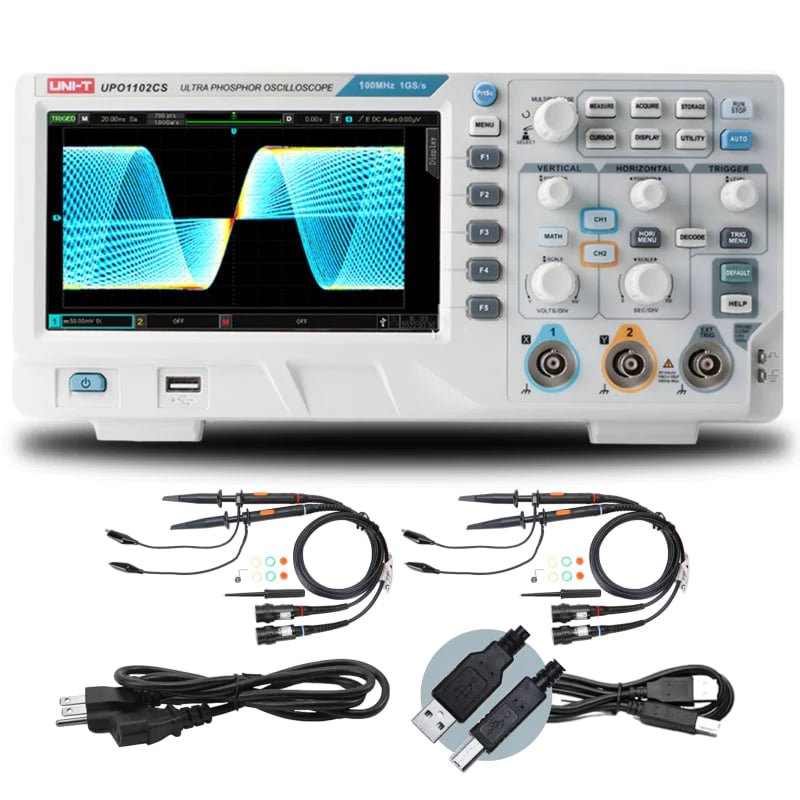
Key Specifications to Consider
Bandwidth
Bandwidth is a critical specification that indicates the frequency range an oscilloscope can accurately measure. Generally, you want the bandwidth of your oscilloscope to be at least five times higher than the signal frequency you plan to analyze. For example, if you’re working with signals up to 100 MHz, you should look for an oscilloscope with at least 500 MHz bandwidth. This ensures that you can capture the necessary details of fast-changing signals, preventing distortions and inaccurate readings.
Sample Rate
The sample rate indicates how many samples per second the oscilloscope captures and is typically measured in samples per second (S/s). A higher sample rate allows for more accurate representation of high-frequency signals. For most applications, you should aim for a sample rate that is at least 2.5 times higher than the bandwidth to maintain signal integrity. For example, if you have a 100 MHz bandwidth, look for a sample rate of at least 250 MS/s.
Number of Channels
The number of channels is another significant consideration. Oscilloscopes typically come with 1 to 4 channels. If you are working on complex projects that involve multiple signals or need to compare waveforms, consider an oscilloscope with multiple channels. This feature allows you to observe how different signals interact over time, which can be crucial for debugging and testing circuits.
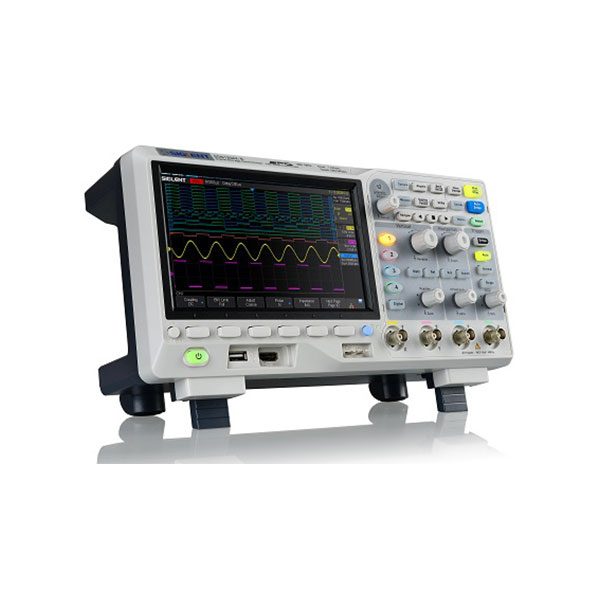
Display and User Interface
Display Quality
The display quality of an oscilloscope can greatly impact usability. Look for models with high-resolution screens that provide clear, detailed waveforms. A large display with a better refresh rate will enhance your ability to interpret waveforms accurately, especially when monitoring fast signals. Some oscilloscopes come with touchscreens for easy navigation and adjustments, making it simpler to modify settings on the fly.
User Interface
An intuitive user interface simplifies the learning process and improves workflow, especially for beginners. Consider the layout of buttons, knobs, and menus. Oscilloscopes that offer shortcut buttons for frequent functions can save time and reduce frustration while using the device. Make sure to read user reviews or, if possible, test different models in person to see how easy they are to operate.
Advanced Features
Triggering Options
Triggering is vital for capturing specific signals or events. An oscilloscope should offer a variety of triggering options, such as edge triggering, pulse width, and video triggering. These features allow you to isolate single events or repetitive signals for easier analysis. Advanced oscilloscopes may also feature complex triggering conditions or delayed triggering, which can be particularly beneficial for debugging intricate designs.
Measurement and Analysis Functions
Many modern oscilloscopes come equipped with built-in measurement capabilities that save time and improve accuracy. Look for models that can automatically measure parameters such as frequency, period, rise time, and more. Additional analysis tools, such as FFT (Fast Fourier Transform) for frequency domain analysis, can also enhance how you evaluate signals. These functions eliminate the need for manual calculations, allowing for rapid testing and troubleshooting.
Connectivity Options
Consider the connectivity options that the oscilloscope provides. USB ports for data transfer or external storage support can be useful for documenting experiments. Some advanced models even offer Ethernet or Wi-Fi capability, enabling remote access and control. This feature can enhance collaborative work, allowing multiple users to view the data and make adjustments from different locations.
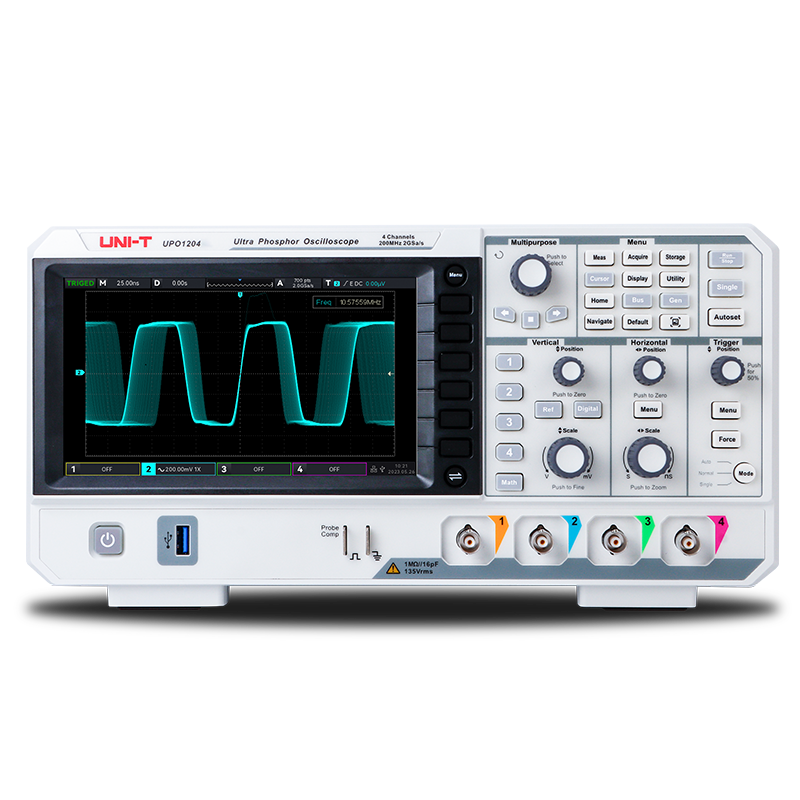
Budget Considerations
Setting a Budget
Before diving into the selection process, determine your budget. Oscilloscope prices can vary widely based on specifications and features. Entry-level models may start at a few hundred dollars, while high-end oscilloscopes with advanced capabilities can cost several thousand. Set a budget based on your specific needs, taking into account whether you’ll be using an oscilloscope for educational purposes, professional work, or as a hobbyist.
Evaluating Cost vs. Features
As you assess different models, consider the relationship between cost and the features you require. While it may be tempting to go for the cheapest option, evaluate whether it meets your necessary specifications. Conversely, splurging on high-end features you might not use could lead to unnecessary expenses. Focus on finding a balance that allows you to utilize your oscilloscope effectively within your financial constraints.
Where to Buy Oscilloscopes
Online Retailers
Many online platforms offer a vast selection of oscilloscopes, often at competitive prices. Retailers like Amazon, eBay, and specialized electronics stores provide numerous choices. Take your time to read the reviews and verify the seller’s reputation. Additionally, online retailers often feature discounts and bundle deals, potentially saving you money on accessories or extended warranties.
Local Electronics Stores
If you prefer to see products in person, visit local electronics stores or specialized instrumentation suppliers. Many of these stores allow you to test different models and get hands-on experience with the devices. Staff members can also offer valuable insights and recommendations tailored to your needs.
Manufacturer Websites
Purchasing directly from manufacturer websites can provide advantages as well. Often, they offer the latest models and may have exclusive promotions or warranties. Purchasing directly can also ensure that you’re buying from an authorized distributor, which can prevent issues with support and service in the future.
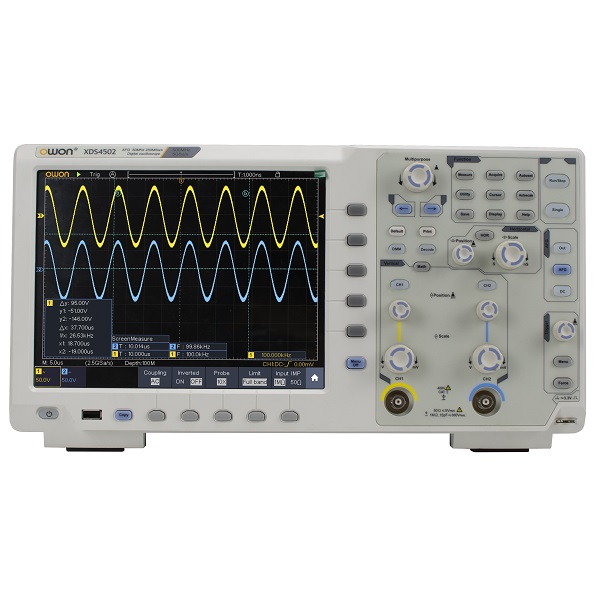
Maintaining Your Oscilloscope
Regular Calibration
Ensuring your oscilloscope remains accurate requires regular calibration. Most manufacturers recommend calibration at specified intervals, which can vary from annually to biannually based on usage. Calibration not only ensures accurate readings but can also extend the lifespan of your device. It is often beneficial to use professional calibration services to maintain precision.
Proper Care and Cleaning
Taking proper care of your oscilloscope is essential. Always store it in a safe environment where it’s protected from dust, moisture, and extreme temperatures. Use a soft cloth to clean the screen and casing to prevent scratches and ensure visibility. Avoid placing objects on the canvas to prevent damage and be cautious when connecting and disconnecting probes to prevent wear on the input connectors.
Updating Software
For digital oscilloscopes, regularly check for software updates from the manufacturer. Outdated firmware may lead to instability or a loss of some functions. Many manufacturers provide easy updates that can enhance performance and even add new features. This makes it essential to stay informed about any improvements available for your model.
Additional Resources for Learning About Oscilloscopes
Online Tutorials and Courses
Once you’ve selected the right oscilloscope for your needs, consider diving deeper into its functionalities and applications. Numerous online resources can help you enhance your understanding of oscilloscopes and improve your measurement techniques. Websites like Coursera, Udemy, and Khan Academy offer courses related to electronics and oscilloscope usage. These platforms often include video lectures, quizzes, and hands-on exercises, making learning engaging and effective.
Community Forums and Groups
Joining community forums and groups focused on electronics and oscilloscope use can provide invaluable insights and support. Platforms such as Reddit, Electronics Point, and the EEVblog forum allow users to share experiences, ask questions, and learn from one another. Engaging with fellow enthusiasts and professionals brings fresh perspectives and tips to enhance your project outcomes.
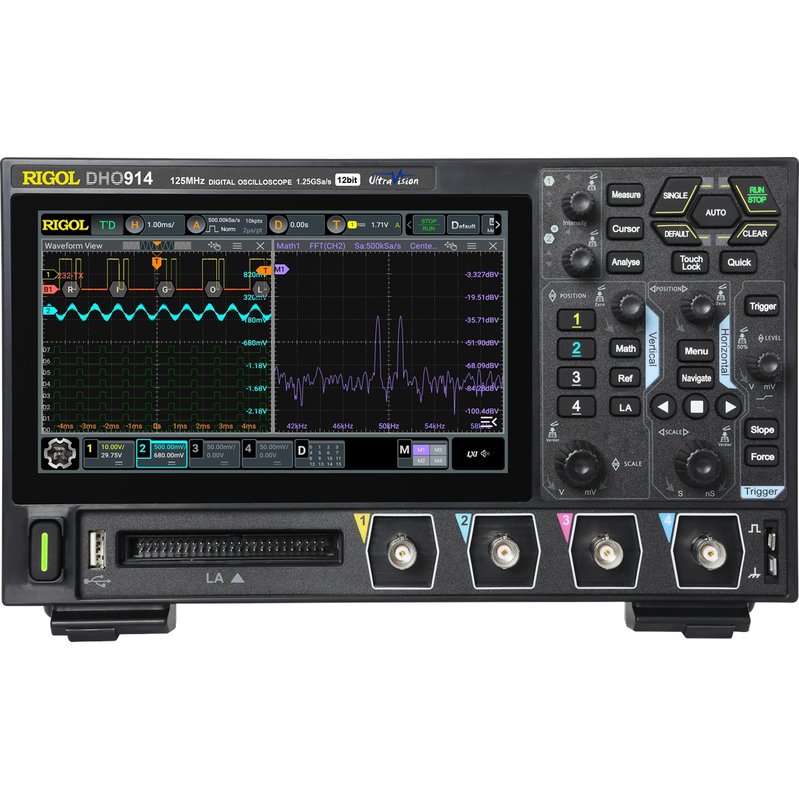
Conclusion
Choosing the right oscilloscope involves understanding your unique needs and preferences, assessing key specifications, and considering various types and features. By evaluating bandwidth, sample rate, display quality, and advanced capabilities, you can find a model that fits your requirements.
Establish a reasonable budget and thoroughly research where to purchase your oscilloscope. Also, remember that proper maintenance, including calibration and care, ensures that your instrument remains reliable and effective for your applications. When equipped with the right oscilloscope, you empower yourself to succeed, whether in education, profession, or personal projects in the fascinating world of electronics. Happy testing and measuring!